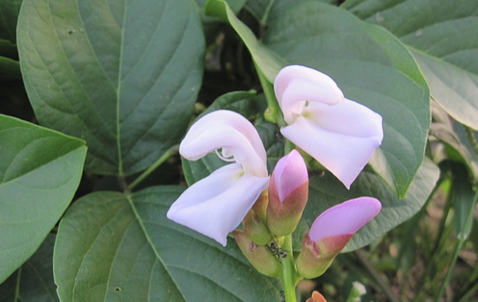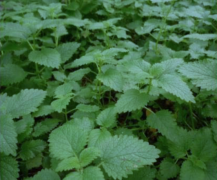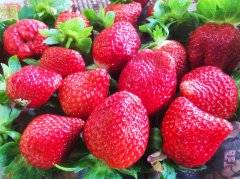Introduction of planting techniques and propagation methods of knife bean, what are the differences between vine and dwarf varieties of knife bean?
Do you know red chicken beans? This kind of plant is also called knife bean, so what is the planting time and method of knife bean? Let's have a look!
Knife beans, flowering from June to July, fruit from August to October.
Plants commonly known as "knife beans" have vine and dwarf two varieties, because the pods are large, similar to the shape of a broadsword, hence the name. Canavalia gladiata, also known as Hongfeng bean, is native to India, with trailing stems, long pods, 20-35 cm long, 4-6 cm wide, red or brown seed coat, seed navel about 3 inch 4 of the seed perimeter, and hilum length nearly equal to seed length. Dwarf knife bean (Canavalia ensiformis), also known as Baifeng bean, Japanese knife bean, and standing knife bean, is native to tropical America, with short stems or semi-trailing stems, short pods, 20-30 cm long, 2.5-4 cm wide, white seed coat, and seed hilum length no more than 1.5mm, only about half of the seed length.
The method of sowing can be used for reproduction, and the seeds can be sowed all the year round, but it is the best from March to April in spring and from September to October in autumn. The seeds are soaked in water for 18-20 hours before sowing, so that they can absorb water and soften up and increase the germination rate. The quality of cultivated soil is better in loam or sandy loam, and the drainage is good. The sunshine needs to be sufficient, and the shade results badly. During cultivation, it is necessary to set up a pillar for climbing the vine stem, and the seedling height is about 30 cm in height to pick the heart once, so as to promote more branches and pull on the pillar. During the growth period, topdressing once a month, all kinds of organic fertilizers or three elements are ideal, the proportion of phosphorus and potassium fertilizer is beneficial to blossom and bear fruit. If you want to eat, the tender pods need to be harvested when they are about 10-15 cm long, and they are not fit for consumption if they are a little old. Sex is fond of high temperature and cold resistance.

- Prev

Introduction to the growth environment and cultivation techniques of lemon wasp grass, what are the functions of lemon wasp grass
Lemon vanilla (Lemon balm), also known as vanilla, honeybee flower, lemon balsam, lemon mint, is a very ancient series of lemon vanilla plants. Potted lemon wasp grass is a good way to grow. If you want to really understand lemon wasp grass, you must start from Gushi.
- Next

Planting time of fragrant strawberries and perfume strawberries, taste characteristics of fragrant strawberries and perfume strawberries
Before 2010, almost every strawberry orchard in Miaoli Lake planted "Fengxiang variety", which is what tourists call "I want the old flavor" of fragrant strawberries with milk flavor in the flesh. The new strawberry variety Lianxiang is also a good variety, but
Related
- The first cup of black tea in spring, the flavor and history of tea gardens in Kenya, Africa
- The computer can not only choose potatoes, but also grow tea rice. AI will grow winter oolong tea champion.
- It is not only the inflated tea bitten by insects, but also engraved with the four seasons tea in Beipu.
- The Oriental Beauty Tea Festival in Zhuxian County takes the stage at the weekend to experience the plus-size feast of oil tea.
- & quot; Oriental Beauty Tea & Exploration of Emei in Hsinchu, the hometown of quot;
- The new variety of strawberry "Tainong 1" dessert is the first choice with mellow aroma. Crimson gorgeous
- History of Tea in Taiwan: from Wild Inner Mountain to Export Tea Garden
- Two types of Taiwan Oriental Beauty Black Tea won the British three-Star Award for Childhood Tea Xiang Zhang Jiaqi changed from pilot to champion tea maker.
- Banana species and varieties: the planting history of Taiwan Xianren banana and dwarf banana is long, is banana disease resistant?
- Coffee planting Technology: Qianjie Coffee from Seedling to harvesting

